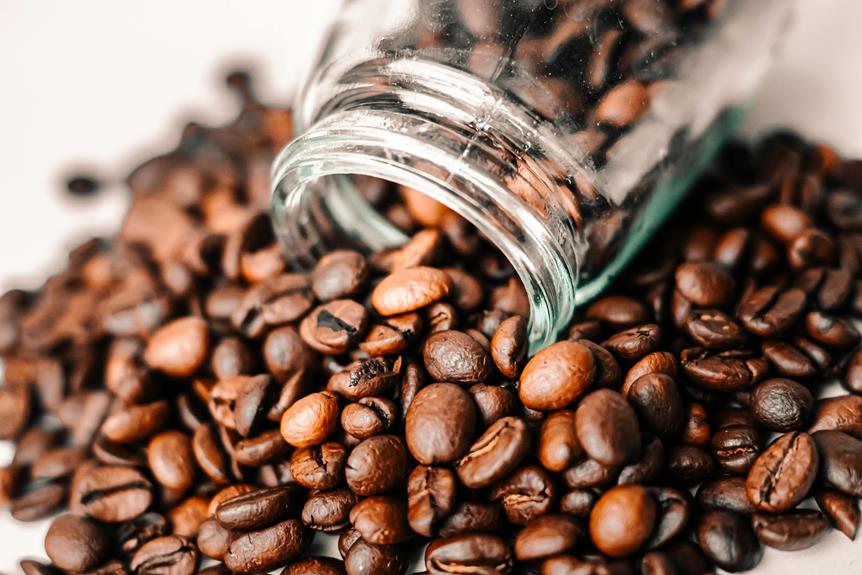
When you hit the power button on your drip coffee maker, a fascinating process begins. The water heating element silently goes to work, reaching the precise temperature needed for a perfect brew. What happens next is a precise sequence of events that transforms those humble coffee grounds into a delicious morning pick-me-up. But how does the machine know just the right moment to drip that hot water over the grounds, and what role does the brewing chamber play in all of this? There's more to this everyday appliance than meets the eye.
Water Heating Element
To operate a drip coffee maker, the first key component you need to understand is the water heating element. This crucial part of the machine is responsible for heating the water to the optimal temperature for brewing a flavorful pot of coffee.
Once you fill the reservoir with water and start the machine, the heating element kicks into action. It rapidly heats the water, ensuring it reaches the ideal temperature for extracting the rich flavors from the coffee grounds.
The water heating element works efficiently to maintain a consistent temperature throughout the brewing process. By heating the water to the correct temperature, usually around 195 to 205 degrees Fahrenheit, it ensures that the coffee grounds are properly steeped, resulting in a delicious and aromatic cup of coffee.
Without this essential component, the brewing process would be ineffective, leading to a weak and unsatisfying brew.
Dripping Process
Efficiently dripping hot water over the coffee grounds is a key step in the brewing process of a drip coffee maker. Once the water has been heated in the reservoir, it's then pumped through a tube and released over the coffee grounds in a systematic manner. The water drips through small holes or slots, ensuring an even distribution over the grounds. This dripping action allows for the coffee grounds to be fully saturated, which is essential for extracting the flavors and oils from the coffee.
As the hot water makes its way through the coffee grounds, it starts the process of brewing. The water absorbs the coffee's flavors and oils as it drips through, creating the rich and aromatic coffee that you enjoy. The speed at which the water drips can impact the strength of the brew, with slower dripping typically resulting in a stronger coffee. Understanding the dripping process is crucial in achieving the perfect cup of drip-brewed coffee.
Brewing Chamber
The brewing chamber in a drip coffee maker is where the magic of extracting flavors from the coffee grounds truly happens. This essential part of the machine is where hot water meets the coffee grounds, initiating the brewing process. As water heats up in the reservoir, it's then pumped into the brewing chamber. Inside the brewing chamber, the hot water drips evenly over the coffee grounds, allowing for maximum extraction of flavors and aromas. The water absorbs the coffee's essences as it passes through the grounds, creating the rich and flavorful coffee that you enjoy.
The design of the brewing chamber is crucial for ensuring that the water is distributed evenly over the coffee grounds. Many drip coffee makers feature a showerhead-like apparatus that disperses the water in a uniform manner, helping to achieve consistent brewing results. Additionally, the brewing chamber regulates the water temperature during the brewing process, ensuring that it remains at the optimal level for extracting the best flavors from the coffee grounds.
Warming Plate
As the brewed coffee drips into the carafe, the warming plate underneath serves a key role in maintaining the temperature of the coffee for an extended period. Once the brewing process is complete, the warming plate, located at the base of the coffee maker, activates to keep your coffee at a desirable temperature. This feature is particularly useful if you plan on enjoying multiple cups throughout the morning or if you tend to sip your coffee slowly.
The warming plate works by using a low level of heat to keep the carafe warm without burning the coffee. It's essential to remember that leaving the coffee on the warming plate for too long can result in a burnt taste due to prolonged exposure to heat. To prevent this, it's advisable to transfer any remaining coffee to a thermal carafe or container if you don't plan on consuming it immediately. When used correctly, the warming plate can enhance your coffee-drinking experience by ensuring that each cup stays warm and enjoyable.




